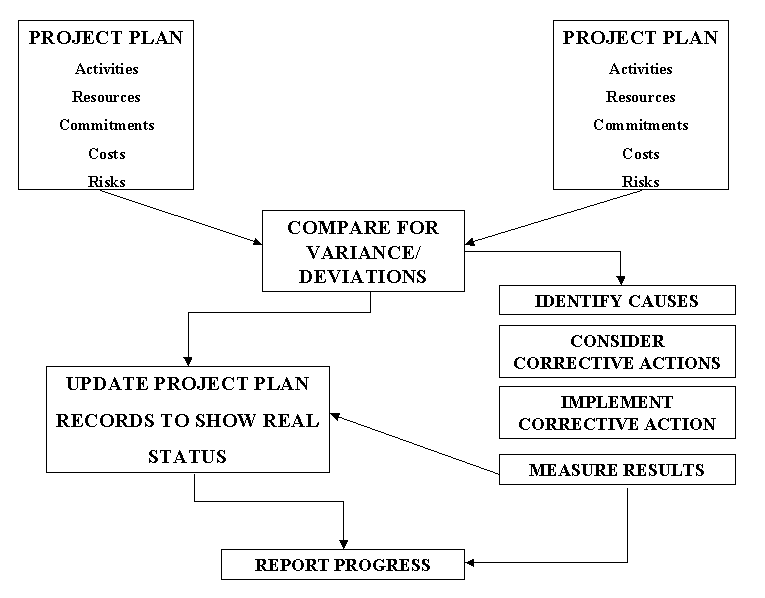Project control is that element of a project that keeps it on track, on time, and within a budget. Project control begins early in the project with planning and ends late in the project with post-implementation review, having a thorough involvement of each step in the process. Each project should be assessed for the appropriate level of control needed: too much control is time-consuming, and too little control is too costly. If control is not implemented correctly, the cost to the business should be clarified in terms of errors, fixes, and additional audit fees.
Control systems are needed for cost, risk, quality, communication, time, change, procurement, and human resources. In addition, auditors should consider how important the projects are to the financial statements, how reliant the stakeholders are on control systems, and how many control systems exist. Auditors should review the development process and procedures of how they are implemented. The process of development and the quality of the final product may also be assessed if needed or requested. A business may want the auditing firm to be involved throughout the process to catch problems earlier on, with the aim of fixing them easily. An auditor can serve as a controls consultant as part of the development team or as an independent auditor as part of an audit.
A business sometimes uses formal systems development processes. These assure that systems are developed successfully. A formal process is more effective in creating strong controls, and auditors should review this process to confirm that it is well-designed and is followed in practice. A good formal systems development plan outlines:
- A strategy to align development with the organisation’s broader objectives.
- Standards for new systems.
- Project management policies for timing and budgeting.
- Procedures describing the process.
There are four primary resources that need to be monitored: time, money, people and materials. Monitoring involves looking at actual expenditures of resources, comparing actual with estimated, and, where necessary, deciding what adjustments need to be made in the work plan to accommodate discrepancies between actual and estimated.
Young describes a simple system that starts with a comparison of the actual results of work done with the desired results (the project plan). Variances are identified; triggering a process whereby the possible causes are identified and evaluated. A number of solutions need to be generated and considered, after which the best solutions are implemented. The results of the corrections are then measured. These corrective actions need to be recorded – the project plan is updated to reflect the real status of the project. Progress is then reported. The system can be depicted as follows:

Variances/deviations are not only identified through formal measurements but also through keen observations by the project manager who keeps a close watch on everything. Managing by walking around (MBWA) is a technique well-known in management circles; in the case of project management, we might as well call it Monitoring by Walking Around. Monitoring is collecting, recording and reporting information concerning any and all aspects of project performance that the project manager or others in the organization wish to know and is part and parcel of the control process. What should be monitored and consequently controlled?
Booyens identified the following things to monitor:
- The status of the work.
- The volume of completed work.
- Costs and expenditures.
- Attitudes of role-players – the team, stakeholders and customers.
- Team cohesion.